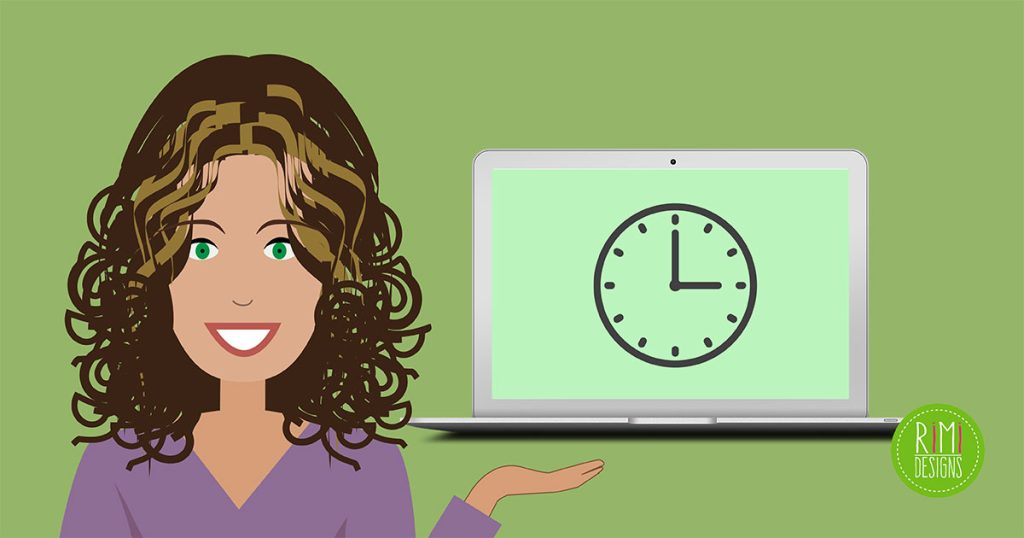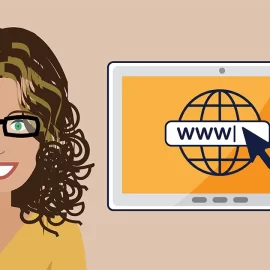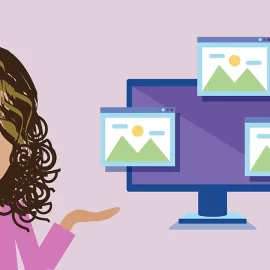
Clients Judge Your Website in a Split Second
When you’re a freelancer, your website is one of your best sales tools. But just because it’s online 24/7 doesn’t mean it’s acting in your best interests. In a fraction of a second, a visitor is going to judge your website and decide if it’s worth it for them to stay and keep going. All this happens before they even consider buying what you’re offering.
Here a few things to consider when creating any sales page.
A solid first impression is key
Your website visitors’ immediate impression of your website is going to make them want to keep going or just close their browser. What are you doing to lead them further down the page? If they know nothing about you or your website, does it make sense to them the second they arrive?
Make it clear where to start. This means that one brief block of text needs to be larger than anything else on the screen. Larger than the logo, larger than any pretty graphics, larger than the navigation.
Is the first thing someone reads on any page on your website enough to draw them in deeper? Are you using language that speaks to them and their motivations or are you just talking about yourself and your product/services? If they come to your sales page without even hitting the homepage first, does everything still make sense?
Orientation follows the first reaction
Now that you’ve got your website visitor started, the next few seconds will be when they figure out if they’re the right person for the page they’re on. After reading the headline, is it obvious what they should do or read next?
In a subheading, graphic or short paragraph (sized much smaller than the headline of course), can you speak to what your visitor might already be thinking after they read the headline? Can you imply a promise that would make them continue?
Use simple and precise words — not confusing, creative or non-concrete bragging. Write in everyday language, as if you were actually talking out loud to them. Honest words in the right tone go much further than outrageous claims or salesy copywriting.
How will you know what’s important to your audience? Do research first. Poll people already in your audience (or even existing customers) on what they value, what they value about the work you do and what motivates them to pay you for it. Then use that language on the page that your audience is already comfortable with.
Make it clear that they’re in the right place. Speak directly to your audience and no one else. That will keep them there longer.
Desirability comes next
This requires a quick subdiscussion on “features vs benefits” because too many websites get this wrong. You want to talk about the benefits of what you’re selling, not just the features. What does this mean? A feature is what your product/service does and a benefit is what a visitor can do with what you’re selling. Speak to the latter, to the actual results, it’s always more powerful.
What are you really selling? What would this visitor gain if they invest? Investment isn’t always just money either. Sometimes what prevents someone from investing is the time they’d have to invest. Books take a while to read, courses can take even longer. The learning curve of a complicated product can take even longer still.
Emotion investment is also important to consider. Feeling obligated or pressured to invest doesn’t always work, whereas speaking directly to their passion or desire for knowledge or results can work quite well.
Matching goals
Now that you’ve got your visitor intrigued and they desire what you’re selling, you’ve got to match your goals with theirs.
After they read/watch/consume your sales page, what’s the next obvious step? What if they only skimmed the headline and subheadings (which most people do)?
A lot of websites get the goals wrong. Your audience doesn’t want to be told what to do, especially if they aren’t “sold” on moving forward yet. Instead of calling them to an action they may not want to take, make the action a reward or payoff.
How can you help them decide if what you’re selling is right for them, before they give you money? Maybe it’s with a common questions + answers section. Or testimonials/social proof. Is it a way to get in touch first, if what you’re selling is a bigger ticket item?
Giving one alternative to “buy now” makes the action an “either/or” instead of a “yes/no” decision.
Whether you’re selling custom services like design or content strategy, or products like books or courses, the sales page for your website is either going to be the best thing for revenue or the biggest detractor.
Experimenting is the only way to find out what will work or not. Even with research in hand and the best content money can buy, a lot of times it takes testing your ideas out to see if they work. Thankfully, this is the beauty of the web. Unlike a print book, you can try several ideas using split tests at once or even change things over time and watch their effects or lack thereof.
There’s such a small window of time that you’ve got when a visitor first reaches your website. How you cater to them and talk to them makes all the difference.
SOURCE: Freelancers Union



